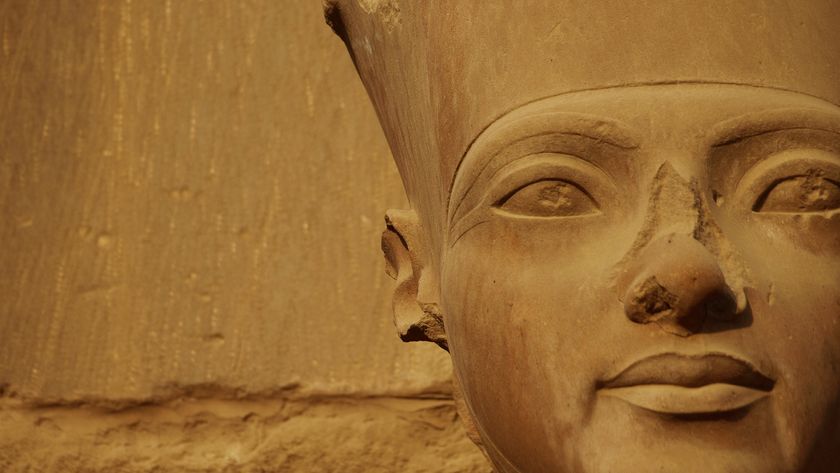
Eruption on Indonesia Fans Public's Fears of Chain Reaction

Volcano watchers across Indonesia are on high alert after Mount Merapi erupted once again today (Nov. 2). It was the volcano's 10th eruption since Oct. 26.
Rumblings have also been detected at 21 other volcanoes in the region, the Associated Press reported, stoking fears and prompting mass evacuations as a precaution.
As the world's largest archipelago 17,500 islands, with 235 million people spread across them Indonesia sits between the world's most active seismic region , the notorious Pacific Ring of Fire , and the world's second most active region, the Alpide belt. Sandwiched between the two earthquake belts, the islands experience some of the most powerful volcanic eruptions and strongest quakes on Earth.

There's some speculation that Merapi could trigger eruptions in other volcanoes. But unless they are very close, volcanic systems are generally isolated from each other, said Ed Venzke of the Smithsonian Institution's Global Volcanism Program in Washington, D.C.
"There is no evidence that the activity at Merapi is having any influence on other volcanoes," Venzke told OurAmazingPlanet.
Deadly disasters
The recent spike in disasters in the area killed nearly 500 people, including 38 in the previous Merapi eruptions. No casualties were reported from the latest eruption, according to the National Disaster Management Authority.
Sign up for the Live Science daily newsletter now
Get the world’s most fascinating discoveries delivered straight to your inbox.
Today's volcanic blast comes as Indonesia struggles to recover from a 7.7-magnitude earthquake that triggered a 10-foot (3-meter) tsunami. One of the Earth's rocky plates subducted, or took a dive below, the other (a process called thrust faulting), resulting in an earthquake. [Related: Why Do Some Earthquakes Cause Tsunamis But Others Don't?]
A look beneath Indonesia would reveal lots of shifting and colliding plates. Below the country, the Eurasian Plate, Australian Plate, Indian Plate, Sunda Plate and Pacific Plate mash together.
Other large ruptures along this fault, known as the Sunda megathrust, resulted in the 9.1-magnitude 2004 quake and Indian Ocean tsunami that killed approximately 230,000 people in a dozen countries.
Mountain of fire
Indonesia is home to 129 active volcanoes. The two most-active ones Kelut and Mount Merapi (meaning "mountain of fire") sit on the island of Java, which also contains the Indonesian capital of Jakarta, roughly 310 miles (500 kilometers) northwest of them.
On Krakatoa, an island west of Jakarta known for causing perhaps the loudest volcanic eruption ever, Anak Krakatau began spewing lava last week, according to USAToday. That activity, Merapi's eruption and the stirring at the 21 other volcanoes, have many people fearing a chain reaction. However, geophysicists say that such simultaneous activities aren't all that unusual and probably aren't linked.
When the Icelandic volcano Eyjafjallajökull erupted last spring, a larger volcano nearby, called Krafla, did not erupt, even though in the past, both volcanoes entered an eruptive phase at same time. Similarly, Hawaii's volcanoes have all been active at the same time in the past, but today only one, Kilauea, is active.
Indonesian officials are cautioning that Merapi could erupt for months. However there's also no way to directly predict how long an eruption will last, John Ebel, a geophysicist and director of Boston College's Westin Observatory, told OurAmazingPlanet.
Some will be active for several months and then go dormant, while others, such as Mount St. Helens in Washington state, will have activity for over a year, and still others will have bursts of activity over a 5- to 10-year period.
"Merapi has been frequently active, with around 68 eruptions in the past 500 years," the Smithsonian's Venzke said. "We define a new eruption as new activity after at least three months of inactivity. So even when the current eruption stops, the volcano will remain very hazardous."
Indonesia's volatile history
The Indonesian islands are precariously located above the grinding and mashing of several tectonic plates, and ringed by a chain of fire-breathing volcanoes.
The Pacific Ring of Fire, technically called the Circum-Pacific belt, is the world's greatest earthquake belt, according to the U.S. Geological Survey, due to its series of fault lines stretching 25,000 miles (40,000 kilometers) from Chile in the Western Hemisphere through Japan and Southeast Asia.
In fact, the plate movements are also responsible for some of the most-active volcanoes, which make up the volcanic arc in western Indonesia, home to 129 active volcanoes that are a part of the Ring of Fire.
The Pacific Ring of Fire is home to 452 volcanoes in total that's 75 percent of the world's active and dormant volcanoes. Volcanoes in the Ring of Fire have a deadly history. A 1930 eruption of Mount Merapi killed more than 1,300, and possibly 70 died in a 1994 eruption. Before October, Mount Merapi last erupted in 2006, killing two.
Other colossal volcanic eruptions that have occurred in Indonesia include the eruption of Krakatoa, which reportedly generated the loudest sound ever heard in modern history when it exploded in 1883, killing 40,000 people. Krakatoa is a small volcanic island located between Java and the large island of Sumatra.
The eruption of the Toba supervolcano on Sumatra 70,000 years ago was a global catastrophe, creating six years of volcanic winter.













